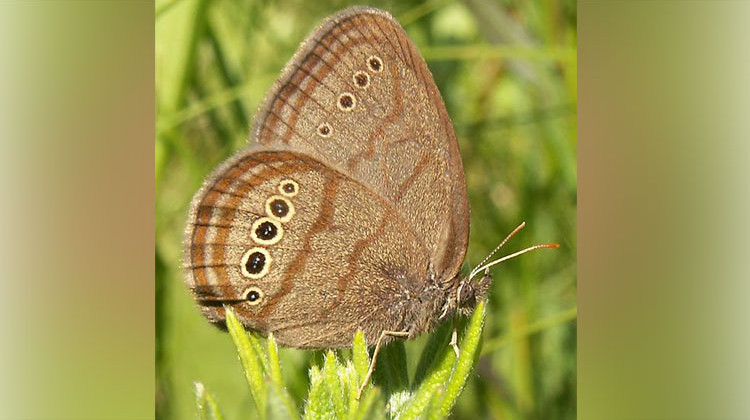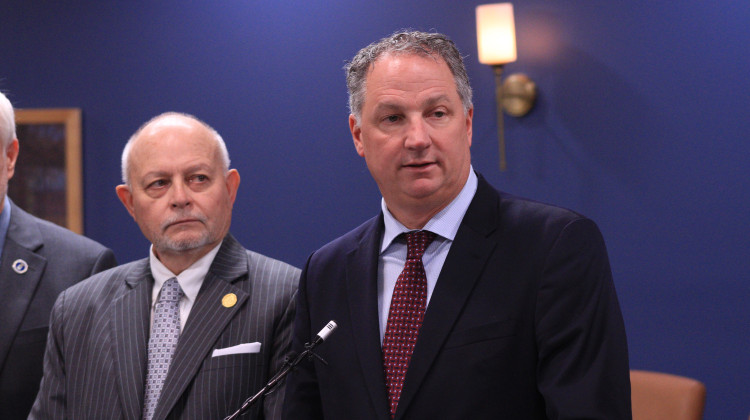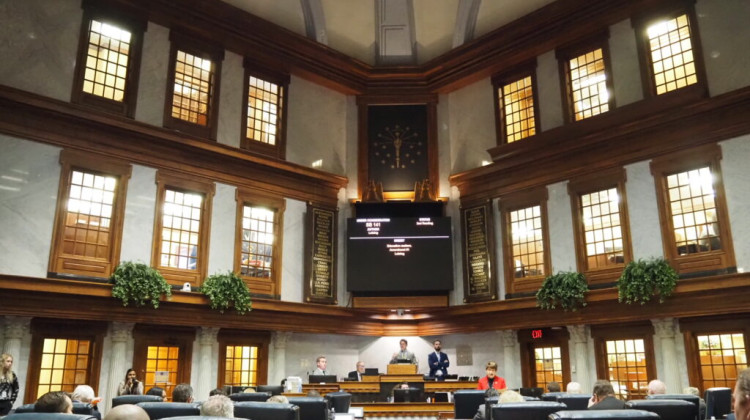
Mitchell's satyr (Neonympha mitchellii) photographed in Van Buren County, Michigan.
Nate and Erin Fuller/Wikimedia CommonsIn order to better protect an endangered butterfly, the U.S. Fish and Wildlife Service says we might end up losing a few of them. The agency recently released a draft plan to restore the butterfly’s habitat in Indiana.
The Mitchell’s satyr is a small brown butterfly that lives in high-quality wetlands fed by groundwater called fens or prairie fens. As far as we know, it only lives in LaGrange County and lower Michigan now, but the butterfly used to be all over the Great Lakes region.
To get rid of the shrubs and trees that shade out the plants Mitchell's satyr likes to eat, land managers might have to mow, use herbicides, or do prescribed burns.
Tom Swinford is with the Indiana Department of Natural Resources nature preserves division. He says unfortunately those activities could harm or kill a small number of Mitchell’s satyr butterflies. But he says they're necessary.
“We’ll lose the very habitat the endangered species are dependant upon,” says Swinford.
U.S. FWS Michigan Ecological Services field office supervisor Scott Hicks says that’s why this restoration plan is so important.
“How can we use these tools to help maintain the habitat the species needs while still ensuring the species is adequately protected at those sites,” he says.
Tom Swinford says there are so few Mitchell's satyrs today due to invasive species and successional habitat change. People also have a role to play here — we've destroyed some of its habitat through development. Swinford says the butterfly is a kind of "canary in a coal mine," it's an indicator that something in the environment is changing.
Indiana Wildlife Federation executive director Emily Wood says this tiny Mitchell’s satyr butterfly may seem insignificant, but it’s part of a larger ecosystem.
“The value of all of them together and the value of the habitat — and that habitat that’s supporting not only that butterfly but so many other insects,” she says.
The public has until Oct. 5 to comment on the plan to restore the habitat of the endangered Mitchell’s satyr butterfly via email or by mailing comments to the U.S. Fish and Wildlife Service Division of Ecological Services.
READ MORE: Federal Proposal Could Harm Threatened Species In Indiana
Indiana Environmental reporting is supported by the Environmental Resilience Institute, an Indiana University Grand Challenge project developing Indiana-specific projections and informed responses to problems of environmental change.
 DONATE
DONATE







 Support WFYI. We can't do it without you.
Support WFYI. We can't do it without you.